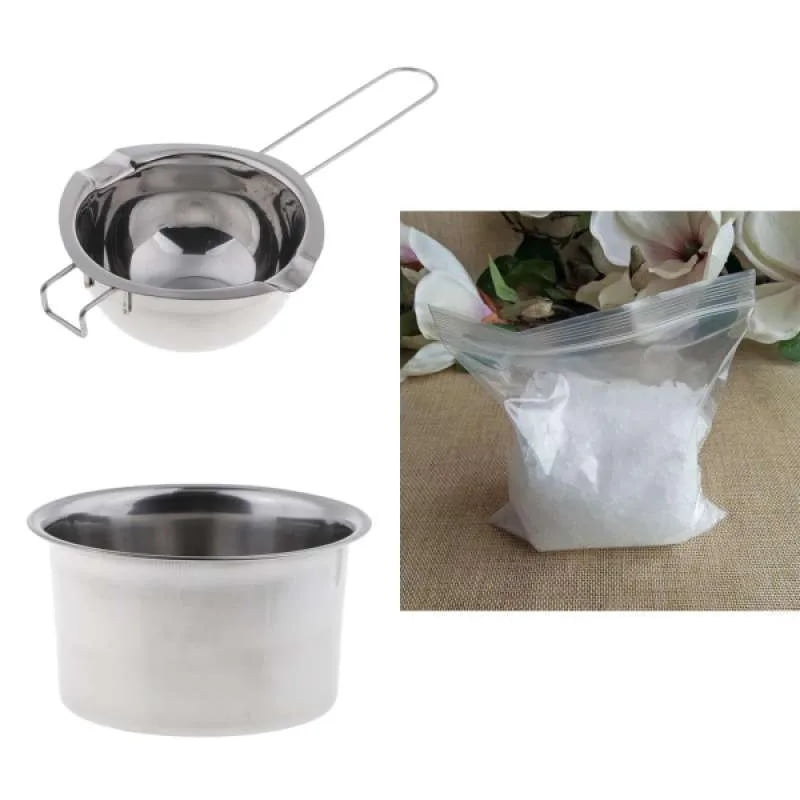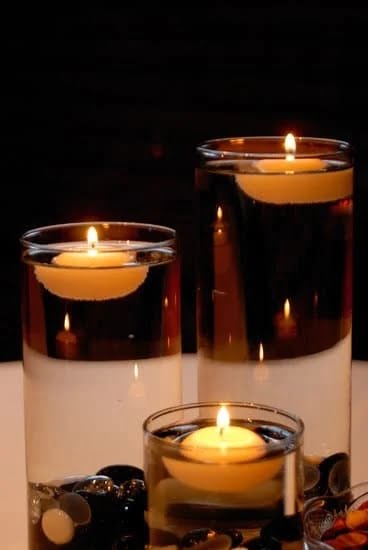Candle making is a beautiful craft that allows individuals to express their creativity and create ambiance in their homes. One crucial aspect of this art form is selecting the right oils for candle making. The oils used not only affect the scent of the candles but also impact their performance.
In this article, we will delve into the world of oils for candle making and explore why choosing the right ones is essential. We will discuss how different oils contribute to the fragrance and overall quality of candles, offering insights into creating aromatic masterpieces that light up any room.
The choice between essential oils and fragrance oils is one that candle makers often face. In the following sections, we will examine these two types of oils, understanding their differences and weighing their pros and cons in candle making. Whether you prefer naturally derived scents or want to explore a wider range of fragrances, we will provide tips on selecting the right type of oil based on personal preference.
Get ready to discover the fascinating realm of oils for candle making as we delve into detailing top essential and fragrance oils, exploring popular carriers, matching specific oils to different candle types and uses, discussing proper incorporation techniques, examining oil properties’ influence on candles, addressing common FAQs, and finally guiding you towards selecting your perfect combination for an unforgettable journey in creating exquisite candles.
Essential Oils vs. Fragrance Oils
When it comes to candle making, choosing the right oils is essential for creating a captivating and aromatic experience. Two popular options are essential oils and fragrance oils, each offering its own unique characteristics and benefits.
Differentiating between essential oils and fragrance oils:
- Essential oils are derived directly from plant materials through processes like steam distillation or cold pressing. They capture the natural aroma of plants and offer therapeutic properties.
- Fragrance oils, on the other hand, are synthetic blends created to imitate certain scents. They often contain a combination of natural and synthetic ingredients.
Pros and cons of using each type in candle making:
- Essential oils are prized for their natural scent profiles and potential health benefits. They can create a more authentic aroma in candles but tend to have a lighter scent throw compared to fragrance oils.
- Fragrance oils offer an extensive variety of scents not found in nature. They have a stronger scent throw and better performance in candles, but may contain synthetic ingredients that some individuals prefer to avoid.
Tips for selecting the right type of oil based on personal preference:
- If you prioritize natural ingredients and therapeutic qualities, essential oils are the way to go. Experiment with different combinations to find your preferred aromas for various candle types.
- If you’re seeking unique scents that cannot be replicated with essential oils, fragrance oils provide a wider range of possibilities. Look for high-quality fragrance oils that meet safety standards.
- Consider your target audience when choosing between essential and fragrance oils. Some people prefer pure botanical aromas, while others enjoy more complex or sweet fragrances offered by fragrance oils.
Understanding the difference between essential oils and fragrance oils is crucial in selecting the right type of oil for your candle making endeavors. Whether you prioritize natural ingredients or a wider range of scent options, both choices have their merits. By experimenting with different oils and understanding their characteristics, you can create candles that are not only visually appealing but also provide delightful aromas to enhance any space.
Top Essential Oils for Candle Making
Exploring the Most Popular and Versatile Essential Oils
When it comes to creating exquisite candles, essential oils are a popular choice for many candle makers. These oils are derived from plants through various extraction methods and offer a wide range of aromas to enhance the ambiance of any space. Here, we will explore some of the most popular and versatile essential oils for candle making.
Lavender Essential Oil: Known for its calming and soothing properties, lavender essential oil is a favorite among candle makers. Its sweet floral scent promotes relaxation and can help melt away stress at the end of a long day.
Patchouli Essential Oil: With its earthy, musky aroma, patchouli essential oil adds depth and complexity to candles. It is often used in combination with other oils to create unique blends that emit an enchanting fragrance.
Eucalyptus Essential Oil: Associated with freshness and clarity, eucalyptus essential oil provides a revitalizing scent to candles. It has a cooling effect that can help clear congestion and promote alertness.
Tips on Incorporating Essential Oils into Candle Making Recipes
Incorporating essential oils into your candle making recipes requires careful consideration to ensure optimal scent throw. Here are some tips to help you effectively use essential oils in your candles:
- Dilution: Essential oils are highly concentrated, so it is crucial to dilute them properly when adding them to your wax. A safe guideline is using around 7-10% essential oil per pound of wax for strong scent throw.
- Stirring Technique: Stir the essential oil into your melted wax thoroughly but gently. Overstirring can cause the oil to evaporate and lose its fragrance.
- Curing Time: Allow your candles to cure for at least 48 hours before lighting them. During this time, the fragrance will have a chance to spread throughout the wax and develop fully.
By selecting the right essential oils and incorporating them correctly into your candle making process, you can create stunning candles that offer delightful aromas and soothing benefits.
Exploring Popular Fragrance Oils in Candle Making
Fragrance oils are a popular choice for candle making due to their wide range of scents and ability to produce strong and long-lasting fragrances. Unlike essential oils, fragrance oils are synthetic and often contain a combination of natural and artificial ingredients that mimic specific smells. When it comes to selecting fragrance oils for candle making, there are several factors to consider.
Firstly, it is important to choose high-quality fragrance oils from reputable suppliers. This ensures that you are using oils that have been tested for safety and are free from any harmful chemicals or contaminants. Look for fragrance oils specifically formulated for candle making, as they will be designed to perform well in wax and provide a good scent throw when the candle is burned.
When selecting fragrance oils, it is also crucial to consider the type of candle you are making and the desired scent profile. Different fragrance oils work best with specific types of candles. For example, floral scents like lavender or rose may be ideal for soy or paraffin candles, while warm and spicy scents like cinnamon or vanilla may complement beeswax candles better.
Blending fragrance oils can also create unique and custom scents for your candles. Experiment with different combinations to find the perfect blend that suits your personal preferences or matches a specific theme or occasion. Keep in mind that some fragrance oils may not blend well together, so it’s important to test small batches before committing to a larger production.
Choosing the Right Carrier Oil for Candle Making
When it comes to candle making, choosing the right carrier oil is essential. Carrier oils serve as a base for your essential and fragrance oils, helping to dilute them and carry their scents throughout the candle.
Additionally, carrier oils can affect the burn time and overall performance of your candles. Here, we will discuss the importance of carrier oils in candle making, compare different types of carrier oils and their properties, and provide recommendations for the best carrier oils based on your candle making needs.
Carrier oils play a crucial role in candle making as they help disperse the scent molecules from essential and fragrance oils into the air when the candle is burned. They also aid in proper combustion by allowing a steady flow of melted wax across the wick. Without carrier oils, candles may not burn properly or release sufficient fragrance.
There are various types of carrier oils available for candle making, each with its own unique set of properties. Some commonly used carrier oils include soybean oil, coconut oil, and palm oil. Soybean oil is popular among many candle makers due to its clean burning properties and excellent scent throw.
Coconut oil offers a slightly different characteristic by providing a longer burn time and enhancing fragrance diffusion. Palm oil is known for its firm texture, resulting in longer-lasting candles with minimal dripping.
To choose the right carrier oil for your candle making endeavors, consider factors such as burn time preference, desired scent throw intensity, and personal ethics surrounding ingredient sourcing. For eco-conscious individuals, opting for sustainable or ethically sourced carrier oils like soybean or coconut can align with their values.
| Carrier Oil | Properties |
|---|---|
| Soybean | Clean burning, excellent scent throw |
| Coconut | Longer burn time, enhanced fragrance diffusion |
| Palm | Firm texture, longer-lasting candles with minimal dripping |
Best Oils for Different Candle Types and Uses
The choice of oils in candle making is not only crucial for the scent and performance of the candles but also varies based on the type and intended use of the candle. Different types of candles, such as soy, beeswax, and paraffin, have varying properties that can be enhanced with specific oils. Additionally, different uses for candles, such as relaxation or aromatherapy, may call for certain oils that promote a particular ambiance.
For soy candles, some of the best oils to use are lavender essential oil and lemongrass fragrance oil. Lavender essential oil has a soothing scent that promotes relaxation and calmness, making it perfect for creating a peaceful atmosphere. Lemongrass fragrance oil offers a refreshing and invigorating aroma that can uplift moods and create an energizing ambiance.
Beeswax candles can benefit from essential oils like eucalyptus and rosemary. Eucalyptus essential oil has a clean and refreshing scent that can help clear the airways and improve respiratory function. Rosemary essential oil provides a fresh herbal aroma that can enhance focus and concentration, making it great for study or work spaces.
Paraffin candles offer more flexibility in terms of scent options due to their compatibility with a wide range of fragrances. Some popular fragrance oils for paraffin candles include vanilla bean and sandalwood. Vanilla bean fragrance oil creates a warm and comforting atmosphere with its sweet, creamy scent. Sandalwood fragrance oil offers a woody and exotic aroma that is often associated with relaxation.
To achieve optimum scent throw and longevity for each type of candle, it is essential to properly measure the amount of fragrance or essential oil added to the wax. Overloading or underloading can affect the burn time and overall performance of the candle. It is recommended to follow guidelines provided by the manufacturer or conduct small test batches to determine the ideal amount of oil needed.
Overall, selecting the best oils for different candle types and uses allows candle makers to create candles that not only look beautiful but also provide the desired ambiance and scent experience. By exploring the characteristics and benefits of various essential oils and fragrance oils, as well as considering the properties of specific carrier oils, candle makers can unlock infinite possibilities to customize their candles.
Experimentation and personal preference play a crucial role in finding the perfect combination of oils that will make each candle unique.
Tips for Properly Incorporating Oils in Candle Making
When it comes to candle making, incorporating oils properly is essential to achieve the desired scent and performance. Here are some tips to help you incorporate oils into your candles effectively:
- Choose the Right Fragrance Ratio: It’s crucial to maintain the proper fragrance ratio when adding oils to candle wax. Adding too much oil can lead to an overpowering scent or even affect the candle’s performance. As a general guideline, the recommended fragrance load is about 6-10% of the total wax weight for most candle types. However, this ratio may vary depending on the specific oil and personal preference.
- Heat and Mix Thoroughly: To ensure that the oils are evenly dispersed throughout the candle wax, it’s important to heat and mix them thoroughly. Start by heating your chosen carrier oil (if needed) before adding essential or fragrance oils. This will help create a smooth blend and prevent any clumps or separation later on. Once heated, slowly add the oils while continuously stirring for several minutes until well mixed.
- Prevent Discoloration or Separation: Some oils may cause discoloration or separation in your candles if not properly incorporated. To avoid these issues, consider using additives like UV inhibitors to prevent discoloration caused by sunlight exposure or use a pre-blended fragrance oil specifically designed for candles to prevent separation in wax.
- Conduct Scent Testing: Before pouring your candles, it is always recommended to conduct scent testing with small batches first. This will give you an idea of how strong the scent throw is and if any adjustments need to be made before creating larger batches of candles.
- Store Properly: Once you have incorporated oils into your candle making process, it’s important to store them properly after pouring to allow for proper curing and optimal scent development. Place your newly poured candles in a cool, dry location away from direct sunlight, drafts, or extreme temperatures. This will ensure that the oils fully bind with the wax and achieve their intended aroma.
By following these tips, you can ensure that your oils are properly incorporated into your candle making process, resulting in candles that not only smell amazing but also burn beautifully. Remember to always experiment and customize based on personal preferences to create exquisite and captivating candles.
Understanding the Role of Oil Properties in Candle Making
How Different Oil Properties Influence Candle Outcome
When it comes to candle making, the properties of the oils used play a crucial role in determining the outcome of the final product. Understanding these properties can help candle makers achieve optimal performance and scent throw in their creations. Several factors, such as flashpoint, fragrance load, and scent retention, should be considered when selecting oils for candle making.
Flashpoint: The Ignition Point
One of the essential properties to consider is the oil’s flashpoint. The flashpoint refers to the lowest temperature at which an oil gives off enough vapor to ignite in the presence of an open flame. Oils with higher flashpoints are generally preferred for candle making as they are less likely to cause fires or pose safety hazards during usage.
Different types of candles require oils with specific flashpoints. For example, soy candles typically have a lower melting point than paraffin candles. Therefore, it is advisable to choose oils with a lower flashpoint for soy candles to ensure that they melt and burn properly.
Fragrance Load and Scent Retention
Another important consideration is the fragrance load and scent retention of the oils used. The fragrance load refers to the maximum amount of fragrance that can be added to a specific type of wax without compromising its performance or burning characteristics. Oils with high fragrance loads allow for stronger scents in candles.
Scent retention refers to how long a candle retains its aroma when burned. Some oils have better scent retention than others, ensuring that your candle continues to emit a pleasant fragrance throughout its lifespan.
It is essential to read product labels or consult suppliers for recommended fragrance loads and scent retention information regarding specific oils. This will help you choose oils that will provide your candles with long-lasting and captivating scents.
By understanding these oil properties and considering them when choosing oils for candle making, you can ensure that your candles not only look beautiful but also perform excellently and fill the room with delightful aromas.
Frequently Asked Questions (FAQs) about Oils in Candle Making
Candle making is a popular and enjoyable hobby, but it can also be accompanied by questions and concerns, especially when it comes to choosing the right oils for your candles. In this section, we will address some commonly asked questions about oils in candle making.
- Q: Are essential oils safe for candle making?
- A: Yes, essential oils are generally safe for candle making. However, it is important to be mindful of their proper usage and potential sensitivities. Some essential oils have lower flashpoints than others, which means they may evaporate or burn off quickly when exposed to heat. It is recommended to conduct research and follow safety guidelines when working with essential oils to ensure the best outcome for your candles.
- Q: Can fragrance oils be used in natural wax candles?
- A: Yes, fragrance oils can be used in natural wax candles like soy or beeswax. However, it is crucial to choose high-quality fragrance oils specifically formulated for candle making. Be sure to check product descriptions or consult with suppliers to ensure compatibility with the type of wax you are using. Additionally, always test a small batch before committing to a larger project to ensure the fragrance oil behaves as desired.
- Q: Can I mix different types of oils in my candles?
- A: Yes, you can absolutely mix different types of oils in your candles. Blending fragrances can be a fun way to create unique and custom scents. For example, you could combine a relaxing lavender essential oil with an uplifting citrus fragrance oil to create a balanced aroma. Just remember to keep track of measurements and ratios when blending oils so that you maintain the right balance for optimal scent performance.
- Q: Can I substitute carrier oils with other types of oil?
- A: While carrier oils are specifically designed for candle making due to their stability and ability to carry fragrances effectively, there may be instances where you could substitute with other oils. However, it is important to research the specific properties and characteristics of alternative oils before making a substitution.
Some oils may have different flashpoints or may not perform as well in candles, so it is always recommended to test small batches before making any wholesale changes. - Q: How can I overcome issues like oil discoloration or separation in my candles?
- A: Oil discoloration can occur due to various factors, including the type of oil used and the temperature at which the candle wax was poured. To minimize discoloration, make sure to choose oils that are known for their stability and resistance to discoloration.
Additionally, ensuring proper mixing and incorporation of scents during candle making can help prevent separation issues. The use of proper wick size based on your container’s diameter can also help prevent these issues.
Remember, each candle maker’s experience will be unique, and it’s always helpful to have reliable information at hand when experimenting with new ideas or troubleshooting any concerns that may arise throughout your candle making journey.
Conclusion
In conclusion, selecting the perfect oils is a crucial aspect of your candle making journey. The oils you choose will not only determine the scent of your candles but also their performance. Whether you opt for essential oils or fragrance oils, understanding the difference between the two and their pros and cons will help you make an informed decision.
When it comes to essential oils, there are a few standout options that are popular and versatile for candle making. From the relaxing aroma of lavender to the uplifting scent of citrus, these essential oils offer unique benefits that can enhance your candle creations. By incorporating them into your recipes properly, you can achieve beautiful candles with captivating scents.
On the other hand, fragrance oils provide a wide range of options for creating custom scents. From fruity to floral to exotic fragrances, these high-quality oils allow you to blend and experiment to find the perfect combination for your candles. By understanding how to mix fragrance oils effectively and achieve optimum scent throw, you can create candles that truly stand out.
It’s also important to consider carrier oils in your candle making process. Different carrier oils have different properties that can impact your candles’ characteristics. Whether it’s soy, beeswax, or paraffin candles, choosing the right carrier oil will ensure optimal burn performance and fragrance release.
Frequently Asked Questions
Which oil is better for candle making?
When it comes to candle making, there are various oils to choose from, each with its own set of characteristics. One popular option for candle making is paraffin oil, known for its long burn time and ability to hold fragrance well. It is a petroleum-based oil that melts easily and provides a smooth texture when solidified.
Another choice often considered is soybean oil, which is derived from soybeans. Soy wax has gained popularity in recent years due to its natural and renewable qualities, as well as its ability to hold fragrance effectively.
What are the best oils to use when making soy candles?
If you’re specifically looking to make soy candles, there are several oils that work best with soy wax due to their compatibility and ability to enhance scent throw. One widely used option is lavender essential oil, known for its calming aroma. Another suitable choice is vanilla absolute oil, which provides a warm and comforting fragrance.
Many candle makers also opt for citrus essential oils like orange or lemon, as they bring a refreshing and uplifting quality to the candles. Additionally, popular options include cedarwood essential oil for its woody scent or eucalyptus essential oil for a cool and invigorating aroma.
What are the strongest essential oils for candles?
Essential oils vary in terms of strength when used in candles, so determining the strongest ones depends on personal preference and the intention behind the candle’s scent. Some commonly regarded strong essential oils are patchouli, bergamot, and frankincense. Patchouli offers a rich and earthy aroma which can be quite potent when used in higher concentrations.
Bergamot possesses a unique citrus fragrance with floral undertones that have an uplifting effect on mood when diffused in candles. Meanwhile, frankincense produces a robust resinous scent that provides grounding and spiritual qualities when used judiciously in candle-making recipes. Keep in mind that using high amounts of these powerful essential oils may require cautious blending for achieving ideal results while ensuring the longevity of the candle’s fragrance.

Welcome to my candle making blog! In this blog, I will be sharing my tips and tricks for making candles. I will also be sharing some of my favorite recipes.





